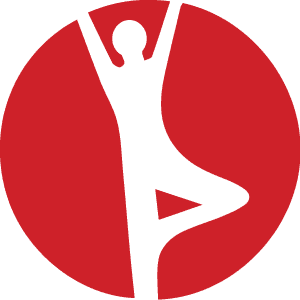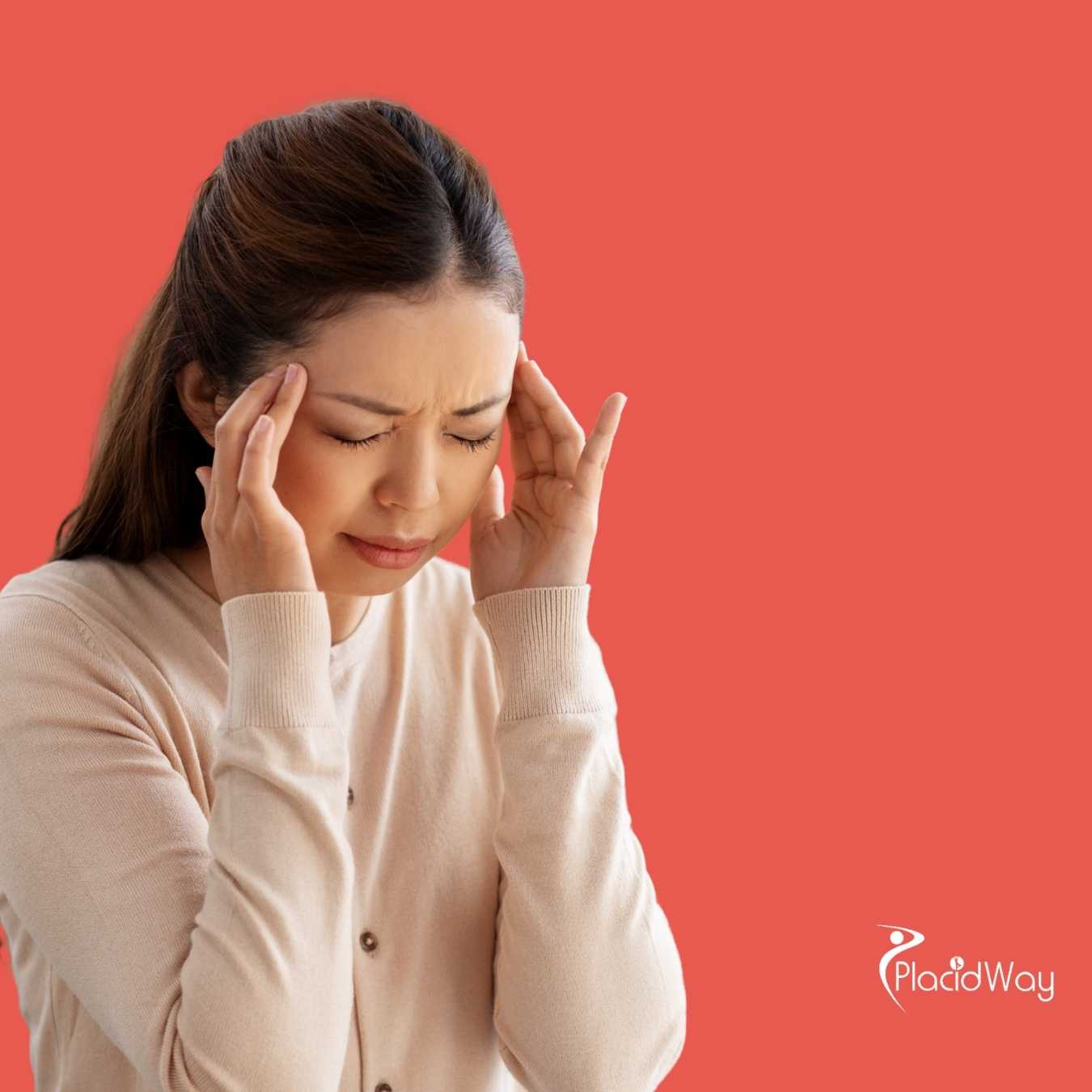
Find Lasting Relief: Headache & Migraine Treatment Options Worldwide
Are you experiencing persistent head pain that disrupts your daily life, making work, family time, and even simple activities unbearable? If you’re constantly searching for "how to stop chronic headaches" or "migraine cure options," you’re not alone. Millions worldwide grapple with the debilitating effects of headaches and migraines, seeking effective solutions beyond daily pain relievers. This content is for anyone suffering from recurring head pain, looking for answers, and considering global healthcare options to find lasting relief.
Headaches, in their various forms, and migraines are more than just a nuisance; they are complex neurological conditions that can severely impact one's quality of life. From the dull ache of a tension headache to the intense, throbbing pain of a migraine accompanied by visual disturbances and extreme sensitivity, these conditions demand comprehensive and often specialized care. For many, finding effective treatment at home can be challenging due to high costs, long wait times, or limited access to advanced therapies.
Medical tourism presents a compelling alternative, offering access to world-class headache and migraine specialists, innovative treatments, and advanced diagnostic tools in renowned medical centers across the globe. Countries known for medical tourism often provide cutting-edge care at more affordable prices, without compromising on quality or safety. Whether you're exploring options for "new migraine treatments," "headache specialist abroad," or simply a more holistic approach to pain management, this guide will illuminate the possibilities available when you expand your search beyond your local borders.
Understanding the root causes and specific types of your head pain is the first step toward effective treatment. We'll delve into common symptoms, explore the underlying factors, and discuss the diverse range of treatments available, from medication and injections to advanced therapies. Furthermore, we’ll guide you through the process of considering international options, helping you make an informed decision on your journey to a pain-free life.
What are the common symptoms of headaches and migraines?
Recognizing the specific symptoms of your head pain is crucial for accurate diagnosis and effective treatment. While nearly everyone experiences a headache occasionally, chronic or severe pain, especially when accompanied by other symptoms, can indicate a more serious underlying condition. Here’s a breakdown of common symptoms associated with different types of head pain:
- Tension Headaches: Often described as a tight band around the head, constant dull ache, or pressure. Pain is usually mild to moderate and affects both sides of the head. Stress, fatigue, and poor posture are common triggers.
- Migraines: More than just a headache, migraines are a neurological condition. Symptoms include:
- Severe, throbbing or pulsating pain, often on one side of the head.
- Nausea and/or vomiting.
- Extreme sensitivity to light (photophobia), sound (phonophobia), and sometimes smell (osmophobia).
- Aura: Visual disturbances (flashing lights, blind spots), tingling, or speech changes that occur before or during the headache phase.
- Fatigue, mood changes, or neck stiffness before the attack.
- Cluster Headaches: These are rare but extremely severe headaches, characterized by intense, piercing pain usually behind one eye. They occur in "clusters" over weeks or months, followed by remission periods. Associated symptoms often include a drooping eyelid, tearing, nasal congestion, or redness in the eye on the affected side.
- Medication Overuse Headaches (MOH): Also known as rebound headaches, these occur when pain relievers are taken too frequently. The symptoms often mimic the original headache but become more frequent and severe. Many patients search for "headache after taking pain meds" when experiencing this.
If you're asking "why do I get headaches every day?" or notice changes in your headache patterns, it's time to consult a specialist.
What causes persistent headaches and migraines?
Understanding the causes and triggers of your headaches and migraines is a cornerstone of effective management. While the exact mechanisms are still being researched, common factors include:
- Genetics: Migraines, in particular, often run in families, suggesting a strong genetic component. If your parents or siblings have migraines, you’re more likely to experience them.
- Environmental Triggers: These vary widely among individuals but commonly include:
- Stress: Emotional or physical stress is a leading trigger for both tension headaches and migraines.
- Dietary Factors: Certain foods and beverages like aged cheese, processed meats, caffeine withdrawal, and alcohol (especially red wine) can trigger attacks for some. Many search for "foods that trigger migraines."
- Sensory Stimuli: Bright lights, loud noises, strong smells (perfumes, smoke) can induce migraines.
- Sleep Disturbances: Both too much and too little sleep can be triggers.
- Weather Changes: Barometric pressure changes are a known trigger for many.
- Hormonal Fluctuations: Women often experience migraines related to their menstrual cycle, pregnancy, or menopause, prompting searches for "hormonal migraine relief."
- Medication Overuse: As mentioned, frequently taking acute headache medications can ironically lead to more headaches (Medication Overuse Headaches).
- Underlying Medical Conditions: Less commonly, headaches can be symptoms of conditions like sinusitis, TMJ disorders, high blood pressure, brain tumors (rarely), or infections.
Identifying your personal "migraine triggers" is a key part of prevention and treatment, often involving a detailed headache diary.
What types of treatments are available for chronic headaches and migraines?
The landscape of headache and migraine treatment has evolved significantly, offering a range of options tailored to individual needs. Your treatment plan will depend on the type, frequency, and severity of your headaches, as well as any co-existing conditions. Patients often search for "new migraine treatments 2024" or "best headache specialist treatments."
Acute Treatments (for immediate relief during an attack):
- Over-the-Counter (OTC) Pain Relievers: Ibuprofen, naproxen, acetaminophen for mild to moderate headaches.
- Triptans: Prescription medications (e.g., sumatriptan, zolmitriptan) specifically for migraines, effective at stopping attacks if taken early.
- CGRP Receptor Antagonists (Gepants): Newer oral medications like ubrogepant and rimegepant offer acute migraine relief, often with fewer side effects than triptans.
- Ditans: (e.g., lasmiditan) another class of acute migraine medications that target serotonin receptors.
- Ergotamines: Older class of drugs, less commonly used due to side effects.
- Anti-nausea medications: Often prescribed alongside pain relievers for migraine-associated nausea.
Preventive Treatments (taken regularly to reduce frequency and severity):
- Beta-Blockers: (e.g., propranolol) originally for heart conditions, effective for migraine prevention.
- Antidepressants: (e.g., amitriptyline) sometimes used for chronic tension headaches and migraines.
- Anti-seizure Medications: (e.g., topiramate, valproate) shown to prevent migraines.
- Botox Injections: Specifically approved for chronic migraines (15 or more headache days a month) in adults. Injections are given around the head and neck. Many search for "Botox for migraines cost."
- CGRP Monoclonal Antibodies: (e.g., Aimovig, Ajovy, Emgality, Vyepti) newer injectable medications taken monthly or quarterly, specifically designed to target the CGRP pathway involved in migraines. These are revolutionary for many.
- Nerve Blocks and Trigger Point Injections: Injections of local anesthetics or steroids into specific nerves or muscle trigger points to disrupt pain signals.
Complementary and Alternative Therapies:
- Acupuncture: Can reduce headache frequency and intensity for some.
- Biofeedback and Relaxation Techniques: Learning to control muscle tension and stress can be highly effective.
- Cognitive Behavioral Therapy (CBT): Helps manage chronic pain and associated stress.
- Nutritional Supplements: Magnesium, CoQ10, and riboflavin are sometimes recommended, though evidence varies.
Who is eligible for advanced migraine and headache therapies?
Deciding if advanced treatments are right for you involves a thorough evaluation by a neurologist or headache specialist. Generally, candidates for advanced therapies are individuals who:
- Experience Chronic Migraines: Defined as having 15 or more headache days per month, with at least 8 of those being migraine days, for more than three months. This is the primary criterion for Botox for chronic migraine.
- Have Not Responded to Conventional Treatments: If you've tried several first-line oral preventive medications and acute treatments without significant improvement, your doctor may consider advanced options. Many patients search for "what to do when migraine medication doesn't work."
- Cannot Tolerate Oral Medications: Some patients experience significant side effects from traditional oral preventive drugs, making them unsuitable.
- Have Specific Migraine Types: While many treatments are broad, some are particularly effective for certain migraine patterns.
- Are Medically Stable: Patients should generally be in good overall health, without contraindications to the specific treatment (e.g., certain neurological conditions for nerve blocks, or pregnancy for some medications).
It's vital to have a detailed discussion with a healthcare provider who specializes in headache disorders to determine the most appropriate and safe treatment path for your specific condition.
What is the recovery time and what can I expect after headache treatment?
The "recovery" process for headache and migraine treatments isn't like recovering from surgery, but rather managing expectations and monitoring effectiveness over time. What you can expect largely depends on the type of treatment:
- Acute Medications (Triptans, Gepants): Relief is often felt within 30 minutes to 2 hours. There's no specific "recovery time," but some people might feel drowsy or have mild side effects afterward. The goal is to return to normal activity quickly.
- Botox Injections for Chronic Migraine: There's no downtime. You can resume normal activities immediately, though strenuous exercise might be advised against for a day. Full therapeutic effects typically take 2-4 weeks to become noticeable, and repeat injections are needed every 12 weeks to maintain efficacy. Patients often ask, "how long does Botox take to work for migraines?"
- CGRP Inhibitors (Injectable): These are usually self-administered monthly or quarterly. There's no recovery period; the medication gradually works over weeks to reduce migraine frequency and severity. Initial effects might be felt within a few weeks, with optimal benefits developing over 2-3 months.
- Nerve Blocks/Trigger Point Injections: You might feel some tenderness or bruising at the injection site for a day or two. Relief can be immediate or take a few days to set in, and its duration varies.
- Lifestyle Changes/Therapies: (Acupuncture, Biofeedback, CBT): These require consistent effort over weeks or months to see sustained improvement. There's no "recovery" but rather an ongoing commitment to the therapy.
Overall, the expectation is a gradual reduction in headache frequency, severity, and duration. It's important to keep a headache diary to track progress and communicate with your specialist, as adjustments to your treatment plan may be necessary.
What are the risks and potential side effects of headache and migraine treatments?
Like all medical interventions, headache and migraine treatments come with potential risks and side effects. It’s essential to discuss these thoroughly with your doctor. Many patients search for "side effects of migraine medication" or "is Botox for migraines safe?"
- OTC Pain Relievers: Long-term use can lead to stomach upset, ulcers, kidney problems, and ironically, medication overuse headaches.
- Triptans: Common side effects include tingling, warmth, tightness or pressure in the chest/neck/jaw, dizziness, and drowsiness. They are contraindicated in patients with uncontrolled high blood pressure or certain heart conditions.
- CGRP Receptor Antagonists (Gepants) and Ditans: Generally well-tolerated. Side effects can include nausea, drowsiness, and dry mouth.
- Preventive Oral Medications (Beta-blockers, Antidepressants, Anti-seizure drugs): Side effects vary widely but can include fatigue, weight gain, dizziness, nausea, dry mouth, and cognitive fogginess.
- Botox Injections: Most common side effects are neck pain, temporary muscle weakness in the neck, and droopy eyelids (rare). Bruising at the injection site can occur. Serious side effects are rare.
- CGRP Monoclonal Antibodies: The most common side effect is injection site reactions (pain, redness, itching). Constipation has been reported with Aimovig. These are generally well-tolerated.
- Nerve Blocks/Trigger Point Injections: Risks include pain or bruising at the injection site, infection, or temporary nerve irritation. Serious complications are rare but can include nerve damage or allergic reactions.
Always inform your doctor about your complete medical history and any other medications you are taking to minimize risks.
How do headache and migraine treatment costs compare globally?
The financial burden of chronic headache and migraine treatment can be substantial, especially for advanced therapies not fully covered by insurance. This is a primary driver for patients exploring "affordable migraine treatment abroad." Below is a generalized comparison, but exact costs depend on clinic, specialist, and specific treatment plan.
| Treatment Type | USA / Western Europe (Est. USD) | Mexico / Turkey / India (Est. USD) |
|---|---|---|
| Initial Specialist Consultation | $200 - $600 | $50 - $200 |
| Botox for Chronic Migraine (per session) | $800 - $1,500 (medication cost only, injections extra) | $300 - $800 (including injections) |
| CGRP Inhibitor (e.g., Aimovig, per month) | $600 - $800 (without insurance) | $200 - $500 (depending on brand/availability) |
| Nerve Block / Trigger Point Injection | $300 - $800 | $100 - $300 |
| Comprehensive Diagnostic Workup (MRI, etc.) | $1,000 - $3,000+ | $300 - $1,000 |
| Acupuncture (per session) | $70 - $150 | $20 - $70 |
*Costs are estimates and can vary based on location, clinic, and individual patient needs. They generally do not include travel, accommodation, or personal expenses.
These comparisons highlight why many patients seeking "cost-effective migraine treatment" turn to medical tourism destinations.
Why should I consider traveling abroad for headache and migraine treatment?
Considering treatment abroad, a concept many refer to as "medical tourism for chronic pain," can be a life-changing decision for several reasons:
- Significant Cost Savings: As seen in the cost comparison, prices for consultations, procedures, and medications can be substantially lower in many international clinics, making advanced treatments accessible without crippling debt.
- Access to Specialized Care and Innovative Therapies: Some regions and clinics specialize in headache and migraine treatment, offering state-of-the-art diagnostic tools and innovative therapies that might not be widely available or approved in your home country.
- Reduced Waiting Times: In countries with universal healthcare systems, long waiting lists for specialist appointments and procedures can delay much-needed relief. Medical tourism can bypass these queues.
- High Quality of Care: Many medical tourism hubs boast internationally accredited facilities with highly trained, often Western-educated, medical professionals, ensuring world-class standards.
- Privacy and Anonymity: For some, seeking medical care abroad offers a degree of privacy that might be appreciated, especially for chronic conditions.
- Combining Treatment with a Vacation: While the primary goal is treatment, the opportunity to recover in a pleasant environment or explore a new culture can be an added benefit.
For those feeling stuck with their current treatment options, searching for "alternative migraine treatments overseas" can open new doors to relief.
Which countries offer the best value for headache and migraine treatments?
Several countries have emerged as leaders in medical tourism, offering excellent value for headache and migraine treatment. When considering "best countries for medical tourism for headaches," these often come to mind:
- Mexico: Known for its proximity to the US, excellent patient care, and modern facilities, particularly in cities like Tijuana and Monterrey. Offers competitive pricing for neurological consultations, Botox, and CGRP inhibitors.
- India: A powerhouse in medical tourism, India provides highly skilled neurologists, state-of-the-art hospitals, and significantly lower costs across the board, from diagnostics to advanced therapies.
- Turkey: With its strategic location, JCI-accredited hospitals, and highly trained medical staff, Turkey offers high-quality treatment at very affordable prices, especially in Istanbul and Ankara.
- Thailand: Renowned for its hospitality, luxurious medical facilities, and comprehensive care packages. Bangkok, in particular, has several world-class hospitals offering specialized neurology services.
- South Korea: Emerging as a hub for advanced medical technology and highly specialized care, offering cutting-edge treatments for complex neurological conditions, though potentially at a higher price point than other Asian destinations.
These countries balance cost-effectiveness with high standards of medical care, making them attractive options for international patients.
What should I expect when traveling abroad for headache and migraine care, and how can I ensure a safe and quality experience?
Embarking on a medical journey abroad requires careful planning and research. To ensure a smooth, safe, and high-quality experience for your "migraine treatment trip abroad," consider the following:
What to Expect:
- Pre-Trip Consultations: Many international clinics offer virtual consultations to discuss your medical history, assess your eligibility, and outline a proposed treatment plan and costs.
- Travel and Accommodation: You’ll need to arrange flights, visas (if necessary), and accommodation. Some clinics or medical tourism facilitators offer all-inclusive packages.
- Language and Culture: Most reputable medical tourism facilities have English-speaking staff, but it’s good to be prepared for cultural differences.
- Comprehensive Evaluation: Expect thorough diagnostic tests and consultations upon arrival to confirm your diagnosis and tailor your treatment.
- Follow-up Care: Discuss post-treatment care and communication plans with your international specialist before you leave.
Ensuring Safety and Quality:
- Choose Accredited Facilities: Look for hospitals accredited by international bodies like Joint Commission International (JCI). This signifies adherence to global standards of patient care and safety.
- Verify Doctor Credentials: Research your chosen specialist’s qualifications, experience, and certifications. Many doctors in medical tourism destinations are Western-trained.
- Read Patient Reviews and Testimonials: Look for unbiased reviews and success stories related to headache and migraine treatment specifically.
- Use a Reputable Medical Tourism Facilitator: Companies like PlacidWay can streamline the entire process, from finding the right clinic and doctor to arranging logistics, offering peace of mind and support.
- Clear Communication: Ensure all your questions are answered and you fully understand the treatment plan, risks, and expected outcomes before proceeding.
- Travel Insurance: Consider purchasing travel insurance that includes medical evacuation and complications coverage.
By taking these steps, you can confidently pursue effective headache and migraine relief globally, transforming your quality of life.
Take the Next Step with PlacidWay
Ready to explore treatment options abroad? Discover top clinics, compare prices, and get a free quote tailored to your needs with PlacidWay.
Best Neurology Treatment Center | Cheap Neurology Treatment Packages










Share this listing